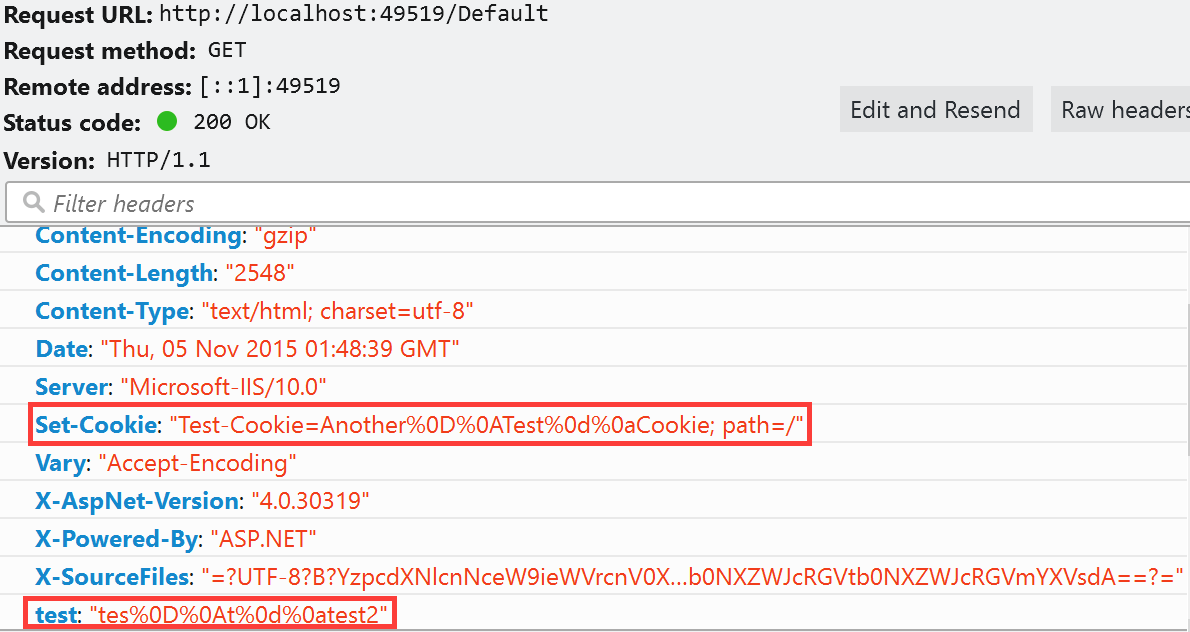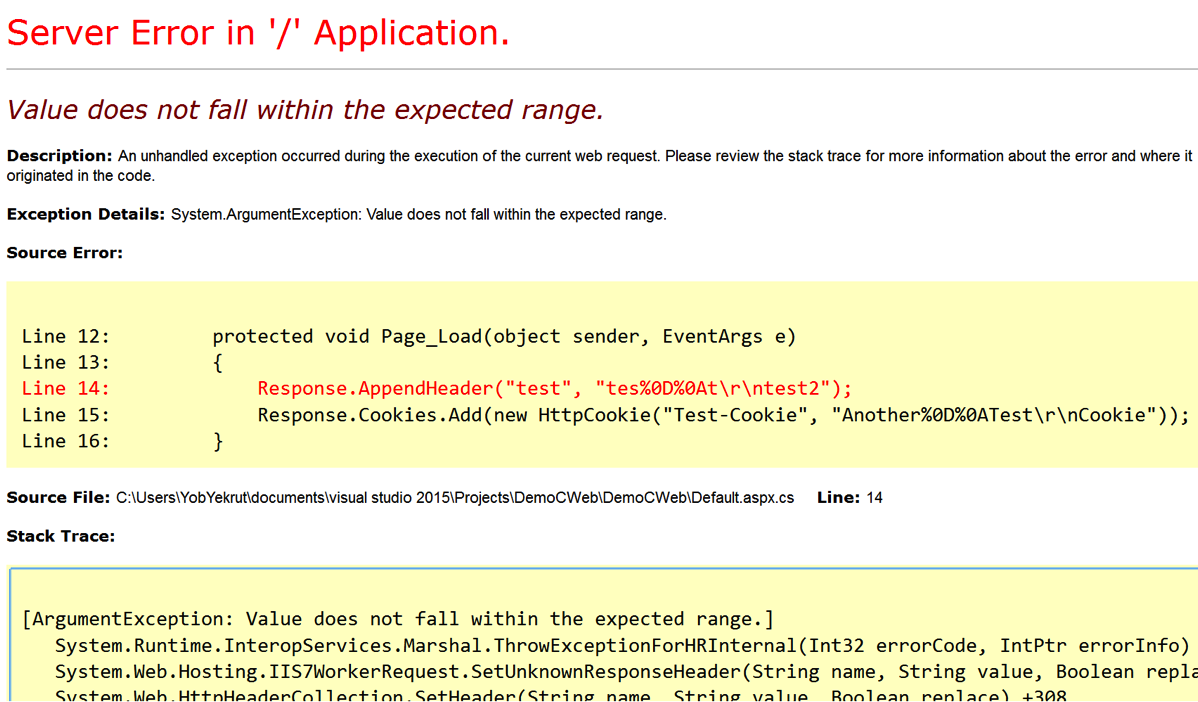.Net EnableHeaderChecking
How often do you take untrusted input and insert it into response headers? This could be in a custom header or in the value of a cookie. Untrusted user data is always a concern when it comes to the security side of application development and response headers are no exception. This is referred to as Response Splitting or HTTP Header Injection.
Like Cross Site Scripting (XSS), HTTP Header Injection is an attack that results from untrusted data being used in a response. In this case, it is in a response header which means that the context is what we need to focus on. Remember that in XSS, context is very important as it defines the characters that are potentially dangerous. In the HTML context, characters like < and > are very dangerous. In Header Injection the greatest concern is over the carriage return (%0D or \r) and new line (%0A or \n) characters, or CRLF. Response headers are separated by CRLF, indicating that if you can insert a CRLF then you can start creating your own headers or even page content.
Manipulating the headers may allow you to redirect the user to a different page, perform cross-site scripting attacks, or even rewrite the page. While commonly overlooked, this is a very dangerous flaw.
ASP.Net has a built in defense mechanism that is enabled by default called EnableHeaderChecking. When EnableHeaderChecking is enabled, CRLF characters are converted to %0D%0A and the browser does not recognize it as a new line. Instead, it is just displayed as characters, not actually creating a line break. The following code snippet was created to show how the response headers look when adding CRLF into a header.
public partial class _Default : Page
{
protected void Page_Load(object sender, EventArgs e)
{
Response.AppendHeader("test", "tes%0D%0At\r\ntest2");
Response.Cookies.Add(new HttpCookie("Test-Cookie", "Another%0D%0ATest\r\nCookie"));
}
}
When the application runs, it will properly encode the CRLF as shown in the image below.

My next step was to disable EnableHeaderChecking in the web.config file.
<httpRuntime targetFramework="4.6" enableHeaderChecking="false"/>
My expectation was that I would get a response that allowed the CRLF and would show me a line break in the response headers. To my surprise, I got the error message below:

So why the error? After doing a little Googling I found an article about ASP.Net 2.0 Breaking Changes on IIS 7.0. The item of interest is “13. IIS always rejects new lines in response headers (even if ASP.NET enableHeaderChecking is set to false)”
I didn’t realize this change had been implemented, but apparently, if using IIS 7.0 or above, ASP.Net won’t allow newline characters in a response header. This is actually good news as there is very little reason to allow new lines in a response header when if that was required, just create a new header. This is a great mitigation and with the default configuration helps protect ASP.Net applications from Response Splitting and HTTP Header Injection attacks.
Understanding the framework that you use and the server it runs on is critical in fully understanding your security risks. These built in features can really help protect an application from security risks. Happy and Secure coding!
I did a podcast on this topic which you can find on the DevelopSec podcast.



